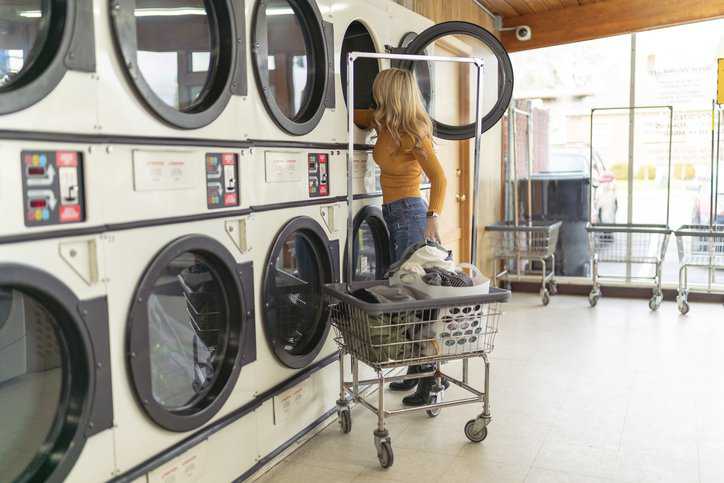Did you know the first washing machine appeared in the 1760s? It was reportedly a simple box people filled with clothes, and it involved pouring hot water into a tank and turning a lever to wash clothes and then wringing them between two rollers. It was only in 1930 that washing machines became automatic, drastically saving time intensive labor for washing clothes and household linen. ANSI Z8.1-2016: American National Standard for Commercial Laundry Equipment and Operations – Safety Requirements specifies safety requirements for commercial laundry equipment.
History of Doing Laundry
Since the types of clothing that were worn in pre-industrial times (i.e., those made of felt, leather, wool, linen, and/or alpaca) could not be laundered, laundry did not become a weekly chore until the 19th century. Instead, to get rid of dirt, these clothes were shaken or brushed. Eventually, cotton replaced linen and wool as the preferred fabric for clothing, and as such, laundry became a large and important component of women’s domestic labor.
During this period, laundry was primarily a non-mechanical and quite arduous process. Women often allocated at least a full day of labor to do laundry. This laborious, time-consuming task involved carrying water to the laundry site where it was heated over a fire, making soap out of lye and animal fat, scrubbing clothes on washboard to remove the dirt, and hanging wet clothes and lines outside to dry (regardless of weather conditions).
Next time you do your laundry at home or the laundromat, you can be thankful for the invention of automatic electric laundry machines and standards, such as ANSI Z8.1-2016, that assure their safety.
What Is ANSI Z8.1?
ANSI Z8.1-2016 applies to the safety design and safe operation of equipment and some systems used in commercial and institutional laundries and dry-cleaning plants. This American National Standard provides reasonable safety requirements for commercial laundry machines. It specifies requirements for nameplates, electrical components, steam pipes, pressure vessels, fans, operator warnings, and more.
ANSI Z8.1-2016 does not apply to coin-operated or ticket-operated laundries or any dry-cleaning establishments (except for Garment Finishing & Pressing Equipment used in plants which primarily process laundered goods).
Washing Machine Interlock: A Crucial Safety Feature
A washing machine interlock (i.e., a door lock) is an essential safety feature; it prevents the door from opening while the machine is operating, thereby protecting users from potential injury caused by spinning clothes or hot water. Basically, a washing machine interlock assures that the door remains closed during the washing cycle—particularly during high-speed spin cycles. ANSI Z8.1-2016 details that a manual washing machine or manual washer/extractor should be equipped with an interlock that will enable the following:
- Prevent opening of the access door or cover while the cylinder or basket is rotating during or at the end of the extract cycle in excess of 10 rpm, and after opening the access door, the cylinder should come to a full stop within three (3) seconds
- Allow the operator to rotate the cylinder or basket by manual control or by jogging for loading or unloading while the access door or cover is open
ANSI Z8.1-2016: American National Standard for Commercial Laundry Equipment and Operations – Safety Requirements is available on the ANSI Webstore.
